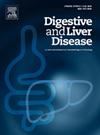Oncostatin M modulates the biology of cholangiocarcinoma cells and the tumor microenvironment
IF 4
3区 医学
Q1 GASTROENTEROLOGY & HEPATOLOGY
引用次数: 0
Abstract
Background and Aims
Cholangiocarcinoma (CCA) is a highly aggressive tumor characterized by high resistance to chemotherapy and poor prognosis. Increasing evidence highlights that oncostatin M (OSM) regulates the tumor microenvironment (TME) and orchestrates the crosstalk between cancer and stromal cells. This project aims at elucidating the involvement of this factor and its receptor in iCCA progression, as well as in tumor-stroma interaction.
Method
Expression of OSM and its receptor was analysed in patients with iCCA by immunohistochemistry or RT-PCR. Two human iCCA cell lines (HuCCT-1 and CCLP-1) and two type of cultured stromal cells have been used in this study. Cell migration and invasiveness of iCCA cells has been evaluated by performing chemotaxis and invasion assays. Knockdown of OSMR and gp130 was carried out with specific siRNA in iCCA cells.
Results
iCCA cells expressed both OSM receptors and OSM at protein levels. In human CCA specimens, OSM was expressed at higher levels in cancer cells and in the tumor microenvironment with respect to peritumoral tissue. In addition, OSMR mRNA levels were higher in CCA. Exposure of iCCA to OSM induced a dose-dependent increase in cell migration and invasion. These effects were mediated by cytoskeletal rearrangement (increased expression of p-FAK, p-paxillin and p-MLC2), and inducing EMT. OSM also upregulated cancer-associated pathways including c-Myc, G6PD, p-Rb, and p-Akt The ability of OSM to induce iCCA cell migration and invasion was reduced after knockdown of the OSMR or of gp130, or treatment with ruxolitinib. Incubation of primary hepatic stellate cells, HSCs or cancer-associated fibroblasts, CAFs with conditioned medium collected from iCCA cells treated with OSM resulted in increased cell migration, suggesting a role in the formation of a dense fibrotic tumor microenvironment.
Conclusions
This study identifies the OSM/OSMR axis as a novel system potentially implicated in cholangiocarcinogenesis with modulation of the tumor microenvironment.
求助全文
约1分钟内获得全文
求助全文
来源期刊

Digestive and Liver Disease
医学-胃肠肝病学
CiteScore
6.10
自引率
2.20%
发文量
632
审稿时长
19 days
期刊介绍:
Digestive and Liver Disease is an international journal of Gastroenterology and Hepatology. It is the official journal of Italian Association for the Study of the Liver (AISF); Italian Association for the Study of the Pancreas (AISP); Italian Association for Digestive Endoscopy (SIED); Italian Association for Hospital Gastroenterologists and Digestive Endoscopists (AIGO); Italian Society of Gastroenterology (SIGE); Italian Society of Pediatric Gastroenterology and Hepatology (SIGENP) and Italian Group for the Study of Inflammatory Bowel Disease (IG-IBD).
Digestive and Liver Disease publishes papers on basic and clinical research in the field of gastroenterology and hepatology.
Contributions consist of:
Original Papers
Correspondence to the Editor
Editorials, Reviews and Special Articles
Progress Reports
Image of the Month
Congress Proceedings
Symposia and Mini-symposia.
 求助内容:
求助内容: 应助结果提醒方式:
应助结果提醒方式:


